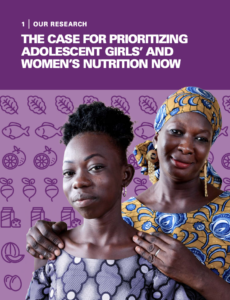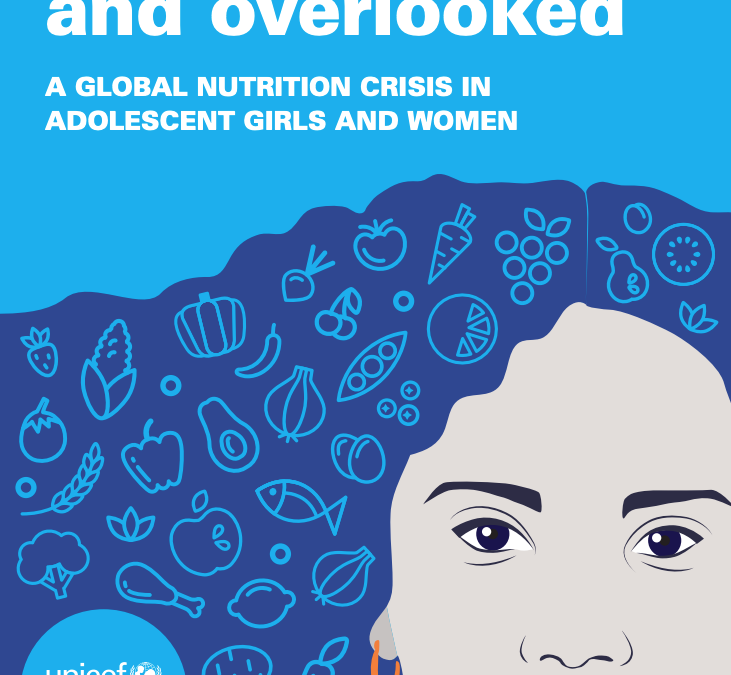By THINKMD founder Dr Barry Finette
Anemia is a condition that affects tens of millions of people worldwide, especially adolescent girls and women living in low and middle income countries. The causes are multifactorial, including chronic disease and food insecurity limiting access to stable food sources. A new report by UNICEF finds that acute malnutrition has risen by 25% since the 2020 pandemic crisis-hit countries and that adolescent girls and women struggle to access nutritious diets.
Anemia is a condition in which a person’s blood has a lower than normal number of red blood cells or hemoglobin. Hemoglobin is a protein in red blood cells that carries oxygen from the lungs to the rest of the body. When a person has anemia, their body doesn’t get enough oxygen, which can lead to fatigue, weakness, organ damage and increased risk of acute and chronic diseases. Women are particularly susceptible to anemia due to factors such as menstruation, pregnancy, malaria and breastfeeding. In addition, women who face food insecurity are more likely to develop anemia due to a lack of iron-rich foods in their diets. Women who are pregnant and have anemia are at a higher risk of premature delivery and low birth weight babies. In severe cases, anemia can lead to heart problems, and even death. Preventing anemia in women who face a nutrition crisis is crucial.
The promising news is that treating acute anemia is safe and cheap. Treating repeated anemia associated with chronic disease and malnutrition is more complex. Providing access to nutritious foods such as meat, fish, and leafy green vegetables can help prevent anemia caused by iron deficiency. In addition, education about the importance of a balanced diet can help women make informed choices about what they eat. Providing access to healthcare services is also important. Regular blood test screening can detect anemia early, allowing for early treatment and prevention of more serious health problems. There are also now advanced accurate probes available that negate the need for acquiring blood hemoglobin levels. Women who are pregnant or breastfeeding should receive regular prenatal care to ensure the health of both the mother and baby. A key component to address this crisis is the need to fully understand the prevalence and incidence of anemia in low and middle income countries where blood screening and diagnosing at-risk populations are quite limited.
THINKMD’s clinical intelligence platform guides frontline health workers, regardless of their level of clinical skill, to identify physical features or findings for risk of anemia. This is important especially in areas where laboratory testing or access to hemoglobin probes are simply not available. Each clinical encounter facilitates anemia data at a program and country level to be acquired. Across the 10 countries that our technology is implemented, we identified 2,962 patients at risk for anemia in seven countries between January 2022 and February 2023, with 61.4% of those women.
The UNICEF report concludes:
The scale and consequences of undernutrition, micronutrient deficiencies and anemia in adolescent girls and women are being overlooked and under-recognized by families, society, governments, development and humanitarian communities, research and academia, media and the private sector. Unless decisive action is taken, we will collectively continue to fail adolescent girls and women, and jeopardize the survival, growth, development and well-being of their children.
With the mounting pressures on food and nutrition security and rapidly approaching deadlines for the global nutrition targets, governments and their development and humanitarian partners – national and international – must take the lead in accelerating progress for adolescent girls’ and women’s nutrition.

UNICEF’s findings reveal the slow global progress on nutrition in adolescent girls and women, and the multiple, interacting drivers that underlie this global crisis.
The UNICEF analysis focuses on undernutrition, micronutrient deficiencies and anemia because these forms of malnutrition affect the most vulnerable adolescent girls and women in low- and middle-income countries, especially in the context of the ongoing global food and nutrition insecurity. It illustrates that healthcare cannot be addressed in isolation; political policies, access to healthcare services and testing and the environment play a role in determining the health of individuals and communities.

